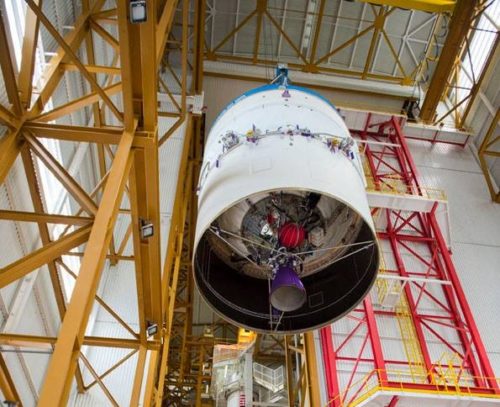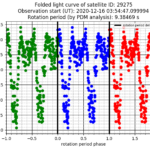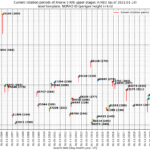On December 2, 2020, our astronomical observatory (the CastelGAUSS Project) in Castelgrande took part in the 5th International Space Debris Re-entry Workshop, organized by the European Space Agency (ESA).
We presented some results of photometric observations of artificial satellites in pre-decay period, primarily of upper stages, like, Falcon 9 R/B, Atlas V Centaur R/B and Ariane 5 R/B.
One of the consequences of participation in this workshop is a new partnership between the CastelGAUSS Observatory and the German private Company Orbit Recycling, led by Frank Koch.
Orbit Recycling offers ESA a totally new way of dealing with space debris and at the same time a different perspective of how to perform active debris removal (ADR).
The basic idea is to capture the inactive Ariane 5 R/B upper stages in HEO and to transport them to the surface of the Moon for construction needs of the future lunar base. Each of these upper stages contains 3-4 tonnes of aluminum, and currently there are more than 80 Ariane 5 R/B in HEO, which would be a great material supply source.
It would also be a very cost-effective way to deliver construction material to the Moon and another step forward in international ADR efforts.
In fact, for this idea Orbit Recycling has been given the Most Pioneering Aluminium Recycling Company 2020 award by the Build Awards 2020.
To capture a piece of space debris is not a trivial task, though. Apart from multiple technological issues, full knowledge about the attitude of the capture target is required. Photometric observations can give us this knowledge.
Together with our colleagues from the Keldysh Institute of Applied Mathematics of the Russian Academy of Sciences we have already gained in the past two years sufficient experience in planning, conducting and analyzing photometric observations of artificial satellites and space debris in HEO/MEO/GEO.
Now, being a partner of the Orbit Recycling company the Observatory will conduct regular photometric observations of Ariane 5 R/B upper stages, determine their rotation periods and keep track on how do these change in time.

An example of an Ariane-5 upper stage: the ESC-A – © Arianespace
Obtained results will help Orbit Recycling to select the first capture target.
So far, more than 30 Ariane 5 R/B upper stages (that is, more than one third of all Ariane 5 R/B in HEO) have already been observed at the Astronomical Observatory of Castelgrande.


